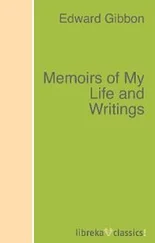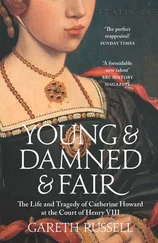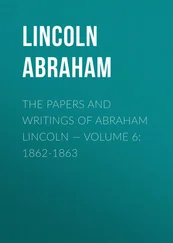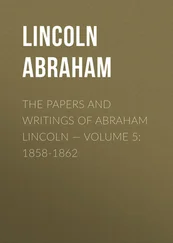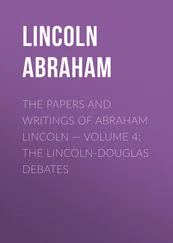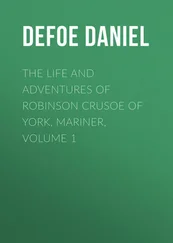Henry Fuseli - The Life and Writings of Henry Fuseli, Volume 3 (of 3)
Здесь есть возможность читать онлайн «Henry Fuseli - The Life and Writings of Henry Fuseli, Volume 3 (of 3)» — ознакомительный отрывок электронной книги совершенно бесплатно, а после прочтения отрывка купить полную версию. В некоторых случаях можно слушать аудио, скачать через торрент в формате fb2 и присутствует краткое содержание. Жанр: visual_arts, foreign_antique, foreign_prose, на английском языке. Описание произведения, (предисловие) а так же отзывы посетителей доступны на портале библиотеки ЛибКат.
- Название:The Life and Writings of Henry Fuseli, Volume 3 (of 3)
- Автор:
- Жанр:
- Год:неизвестен
- ISBN:нет данных
- Рейтинг книги:5 / 5. Голосов: 1
-
Избранное:Добавить в избранное
- Отзывы:
-
Ваша оценка:
- 100
- 1
- 2
- 3
- 4
- 5
The Life and Writings of Henry Fuseli, Volume 3 (of 3): краткое содержание, описание и аннотация
Предлагаем к чтению аннотацию, описание, краткое содержание или предисловие (зависит от того, что написал сам автор книги «The Life and Writings of Henry Fuseli, Volume 3 (of 3)»). Если вы не нашли необходимую информацию о книге — напишите в комментариях, мы постараемся отыскать её.
The Life and Writings of Henry Fuseli, Volume 3 (of 3) — читать онлайн ознакомительный отрывок
Ниже представлен текст книги, разбитый по страницам. Система сохранения места последней прочитанной страницы, позволяет с удобством читать онлайн бесплатно книгу «The Life and Writings of Henry Fuseli, Volume 3 (of 3)», без необходимости каждый раз заново искать на чём Вы остановились. Поставьте закладку, и сможете в любой момент перейти на страницу, на которой закончили чтение.
Интервал:
Закладка:
Such was the state of the Art before the appearance of M. Agnolo and Raffaello, and the establishment of style.
Of M. Agnolo it is difficult to decide who have understood less, his encomiasts or his critics, though both rightly agree in dating from him an epoch – those of the establishment, these of the subversion of Art.
It is the lot of Genius to be opposed, and to be invigorated by opposition. All extremes touch each other: frigid praise and frigid censure wait on easily attainable or common powers: but the successful adventurer in the realms of Discovery, in spite of the shrugs, checks, and sneers of the timid, the malign, and the envious, leaps on an unknown or long lost shore, ennobles it with his name, and grasps immortality.
M. Agnolo appeared, and soon discovered that works worthy of perpetuity could neither be built on defective and unsubstantial forms, nor on the transient whim of fashion and local sentiment; that their stamina were the real stamina of Nature, the genuine feelings of humanity; and planned for painting what Homer had planned for poetry, the epic part, which, with the utmost simplicity of a whole, should unite magnificence of plan and endless variety of subordinate parts. His line became generic, but perhaps too uniformly grand: character and beauty were admitted only as far as they could be made subservient to grandeur. The child, the female, meanness, deformity, were by him indiscriminately stamped with grandeur. A beggar rose from his hand the patriarch of poverty; the hump of his dwarf is impressed with dignity; his women are moulds of generation; his infants teem with the man; his men are a race of giants. This is the "terribil via," this is that "magic circle," in which we are told that none durst move but he. No, none but he who makes sublimity of conception his element of form. M. Agnolo himself offers the proof: for the lines that bear in a mass on his mighty tide of thought in the Gods and Patriarchs and Sibyls of the Sistine Chapel, already too ostentatiously show themselves in the Last Judgement, and rather expose than support his ebbing powers in the Chapel of Paul. Considered as a whole, the Crucifixion of St. Peter and the Conversion of Paul, in that place, are the dotage of M. Agnolo's style; but they have parts which make that dotage more enviable than the equal vigour of mediocrity.
With what an eye M. Agnolo contemplated the Antique, we may judge from his Bacchus, the early production of his youth: in style it is at least equal, perhaps in pulp and fleshiness superior, to what is called the Antique Roman Style. His idea seems to have been the personification of youthful inebriety, but it is the inebriety of a superior being, not yet forsaken by grace, not yet relinquished by mind. In more advanced years, the Torso of Apollonius became his standard of form. But the Dæmons of Dante had too early tinctured his fancy to admit in their full majesty the Gods of Homer and of Phidias.
Such was the opinion formed of the plan and style of M. Agnolo by the judges, the critics, the poets, the artists, the public, of his own and the following age, from Bembo to Ariosto, from Raffaello to Tiziano, down to Agostino and Annibale Carracci. Let us now compare it with the technical verdict given by the greatest professional critic, on the Continent, of our times. "M. Agnolo," says Mengs, "seeking always to be grand, was perhaps only bulky, and by the perpetual use of a convex line, over-spanned the forms and irrecoverably lost the line of Nature. This charged style attended him in his youth, and engrossed him when a man. For this reason his works will always be much inferior to the antique of the good style; for though they made robust and muscular figures, they never made them heavy: – an instance is the Hercules of Glycon, who, though so bulky, and of form so majestic, is easily seen to be swift like a stag, and elastic like a ball. The style of M. Agnolo could not give similar ideas, for the joints of his figures are too contracted, and seem only made for the posture into which he puts them. The forms of his flesh are too round, his muscles of a mass and shape always similar, which hides their springs of motion; nor do you ever see in his works a muscle in repose, than which a greater fault Design knows not. He perfectly knew what place each muscle ought to occupy, but never gave its form. Nor did he understand the nature of tendons, as he made them equally fleshy from end to end, and his bones too round. Raffaello partook of all these defects, without ever reaching the profundity of his muscular theory. Raffaello's strength lay in characterizing aged and nervous frames; he was too hard for delicacy, and in figures of grandeur an exaggerated copy of M. Agnolo." So far Mengs.
M. Agnolo appears to have had no infancy; if he had, we are not acquainted with it. His earliest works are equal in principle and compass of execution to the vigorous proofs of his virility. Like an oriental sun, he burst upon us at once, without a dawn. Raffaello Sanzio we see in his cradle, we hear him stammer, but propriety rocked the cradle, and character formed his lips. Even in the trammels of Pietro Perugino, dry and servile in his style of design, he traced what was essential, and separated it from what was accidental in his model. The works of Lionardo da Vinci and the Cartoon of Pisa are said to have invigorated his eye, but it was the Antique that completed the system which he had begun to establish on Nature; from them he learned discrimination and choice of forms. He found that in the construction of the body the articulations of the bones were the true cause of ease and grace in the action of the limbs, and that the knowledge of this was the reason of the superiority of antique design. He found that certain features were fittest for certain expressions and peculiar to certain characters; that such a head, such hands, such feet, are the stamen or the growth of such a body, and on physiognomy established homogeneousness. Of all artists he was the greatest, the most precise, the most acute observer. When he designed, he first attended to the primary intention and motive of his figure, next to its general measure, then to the bones and their articulations; from them to the principal muscles, or the muscles eminently wanted, and their attendant nerves, and at last to the more or less essential minutiæ. But the characteristic part of the subject is infallibly the characteristic part of his design, if it be formed even by a few rapid or a single stroke of his pen or pencil. The strokes themselves are characteristic, they follow or indicate the texture or fibre of the part; flesh in their rounding, nerves in straight, bones in angular touches.
Such was the felicity and such the propriety of Raffaello when employed in the dramatic evolutions of character, – both suffered when he attempted to abstract the forms of sublimity or beauty. The painter of humanity not often wielded with success superhuman weapons. His Gods never rose above prophetic or patriarchial forms: if the finger of M. Agnolo impressed the divine countenance oftener with sternness than awe, the Gods of Raffaello are sometimes too affable and mild, like him who speaks to Jacob in the ceiling of the Vatican; sometimes too violent, like him who separates light from darkness in the Loggia: but though made chiefly to walk with dignity on earth, he soared above it in the mild effulgence and majestic rapture of Christ on Tabor, not indeed as we see his face now from the repairs of the manufacturers in the Louvre, and still more in the frown of the angelic countenance that withers all the strength of the warrior Heliodorus. Of ideal female beauty, though he himself, in his letter to Count Castiglione, tells us that from its scarcity in life he made attempts to reach it by an idea formed in his own mind, he certainly wanted that standard which guided him in character. His Goddesses and mythologic females are no more than aggravations of the generic forms of M. Agnolo. Roundness, mildness, sanctimony, and insipidity, compose the features and air of his Madonnas: transcripts of the nursery, or some favourite face. The Madonna del Impanato, the Madonna Bella, the Madonna della Sedia, and even the longer proportions and greater delicacy and dignity of the Madonna formerly in the collection of Versailles, share more or less of this insipidity: it chiefly arises from the high, smooth, roundish forehead, the shaven vacuity between the arched semicircular eye-brows, their elevation above the eyes, and the ungraceful division, growth and scantiness of hair. This indeed might be the result of his desire not to stain the virgin character of sanctity with the most distant hint of coquetry or meretricious charms; for in his Magdalens, he throws it with luxuriant profusion, and surrounds the breast and shoulders with undulating waves and plaits of gold. The character of Mary Magdalen met his, – it was the character of a passion.
Читать дальшеИнтервал:
Закладка:
Похожие книги на «The Life and Writings of Henry Fuseli, Volume 3 (of 3)»
Представляем Вашему вниманию похожие книги на «The Life and Writings of Henry Fuseli, Volume 3 (of 3)» списком для выбора. Мы отобрали схожую по названию и смыслу литературу в надежде предоставить читателям больше вариантов отыскать новые, интересные, ещё непрочитанные произведения.
Обсуждение, отзывы о книге «The Life and Writings of Henry Fuseli, Volume 3 (of 3)» и просто собственные мнения читателей. Оставьте ваши комментарии, напишите, что Вы думаете о произведении, его смысле или главных героях. Укажите что конкретно понравилось, а что нет, и почему Вы так считаете.

